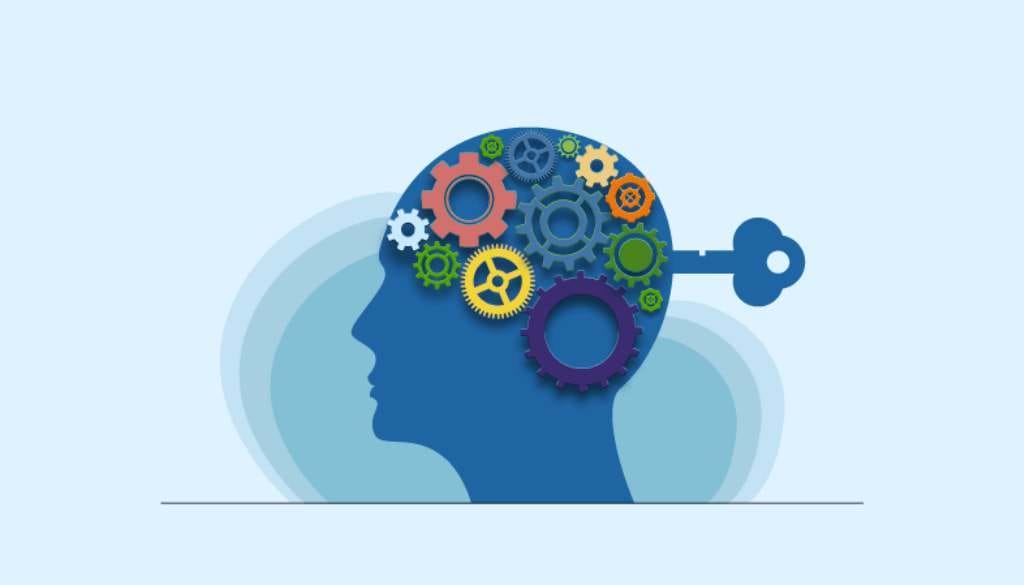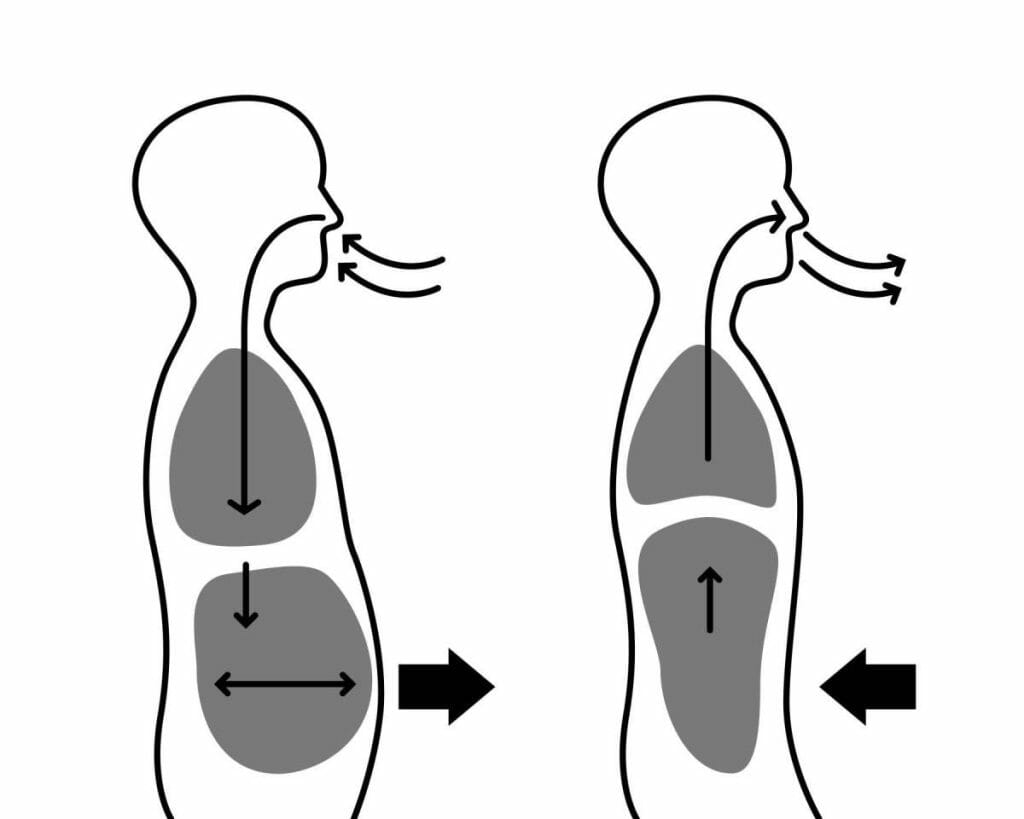
In 2024, an era of extensive technology use, a consistent bombard of notifications, grind culture, and social media affect our nervous systems negatively. This requires effective tools to handle our mental health and overall well-being. Mastering Conscious breathing can be a game changer. Conscious breathing is not just a wellness trend but a strong tool ingrained in modern psychology and classical practices. In Cognitive Behavioural Therapy (CBT), where feelings, thoughts, and behaviors are closely connected, conscious breathing provides a simple yet life-changing way to retrieve control over stress, anxiety, and negative thought patterns.
By employing the mind-body connection, conscious breathing soothes the nervous system, improves concentration, and sharpens emotional regulation. Many mental health professionals have recognized the power of conscious breathing in complementing CBT and modifying bad behaviors and thought patterns. So, stick with us till the end to learn how incorporating conscious breathing into CBT can boost its efficacy and offer long-lasting advantages for mental health.
Executive Summary:
The integration of conscious breathing into Cognitive Behavioral Therapy develops a powerful tool that handles not just mental health issues but emotional and physical ones too. The use of the mind-body connection in conscious breathing relaxes the nervous system, sharpens emotional regulation, and boosts concentration. Conscious breathing and Cognitive Behavioural Therapy (CBT) together are the answer for ideal anxiety and stress management. Some of the powerful conscious breathing techniques are diaphragmatic breathing, box breathing, and Alternate nostril breathing. To get the most out of these breathing exercises, combine bobi _ a personal breathing device with conscious breathing exercises.
Cognitive Behavioural Therapy and Conscious Breathing
Our mind and body are strongly linked and our breathing rhythms show are emotional and mental condition. For instance, When a person encounters anxiety or stress, his breathing turns more rapid and shallow. However, during times of calmness, his breathing slows down and deepens. This mind-body link helps us to manage our emotions via conscious breathing.
Definition of CBT
Cognitive Behavioural Therapy (CBT) is a kind of psychotherapy that investigates the connections between emotions, thoughts, and behaviors. This therapy concentrates on recognizing negative thought forms and beliefs to allow patients to acquire more practical options. It is a structured approach used for the treatment of a range of mental health issues.
The Cognitive Behavioural Therapy (CBT) techniques are the most widely practiced within psychology today. Therapists utilize CBT for better management of depression, anxiety substance use issues, eating disorders, and other mental health issues. CBT can provide multiple benefits when incorporated into therapeutic practices for psychological issues.
Following are some core principles of CBT:
- Cognitive Distortions: It helps individuals address negative thoughts and behaviours (cognitive distortions). It works by challenging and replacing these thoughts, ultimately leading to healthier behaviour patterns.
- Thought-Behavior-Emotion Cycle: The central concept in CBT is that emotions, thoughts and behaviors are interrelated.
- Problem-Solving Focus: CBT is a goal and problem oriented approach.
- Behavioral Activation: Mostly used to handle depression. This principle motivates patients to involve in worthwhile activities when they feel low.
- Skills Development: CBT arms people with powerful skills like assertiveness training, coping strategies and relaxation techniques.
What’s a conscious breathing practice?
One proper technique that can enhance the effectiveness of CBT is conscious breathing. Conscious breathing practice or breathwork, are a range of breathing exercises intended to enhance physical, emotional and mental health. It refers to the practice of developing a soft awareness of one’s breath as it moves in and out of the body.
This practice can help someone achieve a state of calm, providing an excellent foundation for addressing negative thoughts and behaviours during therapy sessions. Following are common conscious breathing techniques:
- Conscious connected breathing (CCB): This is a specific type of conscious breathing that uses connected, full breaths and body-mind techniques. This is to support the physical, emotional, psychological issues mental, and spiritual levels of being.
- Diaphragmatic Breathing: One fundamental cognitive coping skill that therapists might introduce within CBT is diaphragmatic breathing. Also sometimes known as deep breathing, this simple but powerful technique involves pulling the diaphragm down while taking a deep breath in.
Diaphragmatic breathing has been found to be particularly helpful in managing anxiety, making it a useful component of CBT.
The Role of Breathing Techniques in Mental Health Disorders
An examination of conscious breathing and cognitive behavioural therapy (CBT) reveals substantial evidence from clinical trials. These pieces of evidence support the positive effects these practices have on mental health practice. Specifically, they can provide psychological support and help alleviate symptoms of anxiety, depression, eating disorders and other mental health conditions such as bipolar disorder and post-traumatic stress disorder (PTSD).
- Anxiety & Depression: One key aspect of CBT is the incorporation of mindful breathing techniques, which have been found to help reduce anxiety and depression in individuals with autism. Research suggests that intentional slow, deep breathing can improve both physical and mental health by supporting essential systems in our body.
- Stress and Psychosomatic conditions: Moreover, diaphragmatic breathing has been shown to positively impact attention and decrease negative affect in individuals dealing with stress and psychosomatic conditions. These deep breathing exercises can help regulate emotional responses and enhance our overall sense of well-being.
- Eating Disorders: Eating disorders, like bulimia nervosa, anorexia, and binge eating disorder are generally caused by emotional torment, body image worries, and a desire for control. These states are commonly assisted by shame, anxiety, and emotional imbalance. Breathing techniques provide a way to handle these massive emotions by fostering relaxation and decreasing stress, particularly during mealtimes or times of body concerns. Core exercises like diaphragmatic breathing, 4-7-8 breathing, and mindful breathing help individuals to break disorderly behaviors, boost body awareness, and design healthier surviving practices.
- Post-Traumatic Stress Disorder (PTSD): PTSD is a mental health disorder provoked by trauma, mostly causing symptoms like hypervigilance, flashbacks, and emotional numbness. Breathing exercises are important for handling PTSD as they allow individuals to adjust the fight or flight reactions of the body, lowering hyperarousal and soothing the nervous system. When one concentrates on his breath, he can change from a condition of great anxiety to a more calm and grounded condition. Exercises like alternate nostril breathing, box breathing or cyclic sighing are ideal therapy sessions to manage PTSD.
Research-backed benefits of breath control
According to scientific studies, the breathing techniques have significant benefits in CBT. Scientific evidence also points to the psycho-physiological effects of breath control in CBT. They demonstrate that voluntary slowing down of breath frequency can lead to significant changes in brain-body interactions.
Although the exact mechanisms linking breath control to mental health are still under investigation. It’s clear that the practice holds a strong potential for improving one’s mental state.

Cognitive Behavioural Therapy in Stress and Anxiety Management
Cognitive-behavioural therapy (CBT) and conscious breathing have also been shown to help us manage stress more effectively. One of the primary aims of CBT is to help individuals eliminate avoidant and safety-seeking behaviours and coping mechanisms. Such mechanisms prevent self-correction of faulty beliefs, thereby facilitating stress management and improving mental health.
An important aspect of stress reduction is teaching our minds and bodies to respond to emotional challenges more adaptively. CBT does so by encouraging us to challenge negative thought patterns and replace them with more helpful thoughts, ultimately promoting relaxation and calm.
On the other hand, conscious breathing exercises can be an essential part of mindfulness-based stress reduction (MBSR). This practice fosters awareness of our breath as it moves in and out of the body, helping us achieve a state of calm.
Several types of conscious breathing exercises, such as diaphragmatic breathing and alternate nostril breathing, can be integrated into our daily routines. Regular practice of these methods can boost our resilience to stress and anxiety.
Role of MBSR in stress reduction
Furthermore, studies have shown positive outcomes in using CBT and MBSR techniques to alleviate anxiety and depression in different populations, including autistic individuals.
A 2017 study found that both CBT and MBSR, which are therapeutic approaches that include mindful breathing, have helped reduce anxiety and depression among those on the autism spectrum.
Joining CBT with conscious breathing can complement each other in managing stress and anxiety. We can use cognitive restructuring and behavioural therapy strategies from CBT to change our thinking patterns. Whereas conscious breathing helps us stay present and grounded.
Incorporating CBT and conscious breathing into our lives can be an effective way to address stress, anxiety, burnout, and other distressing emotions. Through regular practice, we enhance our coping skills, our ability to navigate challenging situations, foster relaxation, and improve overall well-being.
Practical Breathing Techniques Within CBT
When it comes to conscious breathing and managing stress, there are numerous techniques to choose from. In this section, we will discuss some practical breathing exercises that can help foster relaxation and mindfulness.
1. Diaphragmatic Breathing:
Belly breathing, also known as diaphragmatic breathing, is an effective technique for stress relief. To perform belly breathing, start by placing one hand on your chest and the other on your abdomen. Breathe in deeply through your nose, allowing your belly to expand fully. Then, exhale slowly through your mouth. By focusing on the rise and fall of the abdomen, we can better connect with our breath and attain a more relaxed state.

2. Box Breathing:
Box breathing, also called “square breathing“, is an easy yet powerful exercise mostly used in mindfulness practices and Cognitive Behavioural Therapy. It covers controlled, paced breathing in an organized pattern which relaxes the nervous system, lowers stress, and enhances focus. This breathing technique is known as “box breathing” because it aims for equal phases just like the sides of the square. It requires each phase _ to inhale, hold the breath, exhale, and then hold again, and is carried out for an equal count, generally about 4 seconds.
3. Alternate Nostril Breathing:
Alternative nostril breathing, also known as “Nadi Shodhana” is a yogic breathing exercise. It is frequently used in mindfulness-based CBT practices. In this technique, one breathes through one nostril while closing the other and then changing nostrils. The technique is perfect for stabilizing the mind and body, fostering relaxation, and wiping out mental fog. If you want to balance your autonomic nervous system to lower stress and anxiety, this technique is for you.
When you regularly do these practical cognitive Behavioural therapy exercises, they leave a significant impact on our overall well-being. Just dedicate a few minutes each day to conscious breathing. This will help you effectively manage stress and cultivate a greater sense of inner peace and balance.
Conscious Breathing Impacts on Physical Health
Incorporating conscious breathing techniques into our daily routines can have a profound impact on our physical health. We can experience improvements in several aspects of our health.
Benefits of Practicing Conscious Breathing
Following are some benefits of conscious breathing on our physical health.
- Enhanced Ability: When we practice conscious breathing during exercise, we enhance our ability to manage our breath and improve the efficiency with which our bodies utilize oxygen. This not only leads to improved endurance but also helps in reducing the onset of fatigue. Additionally, mastering these techniques can aid recovery post-workout by providing much-needed relaxation and improving circulation.
- Impact on Heart Rate: Moreover, our heart rate can also significantly benefit from conscious breathing exercises. By focusing on our breath and engaging in slower, diaphragmatic breathing, we can stimulate the vagus nerve, which in turn helps to reduce our heart rate. This process is known as the relaxation response, and it helps to counteract the adverse effects of stress on our bodies.
- Lower Blood Pressure: Regular practice of conscious breathing can also lead to lower blood pressure, as it activates the parasympathetic nervous system and promotes relaxation.
-
Research shows that incorporating techniques such as diaphragmatic breathing can have a positive effect on both systolic and diastolic blood pressure levels.
- Balancing our blood pressure can contribute to a reduced risk of cardiovascular diseases and an overall improvement in physical health.
- Improved Overall Quality of Life: Lastly, consistent practice of conscious breathing can significantly enhance our overall quality of life. As we become more aware of our breath and develop a deeper sense of relaxation, we may experience reduced stress and anxiety levels, improved mental focus, and better emotional management.
The Effects on Nervous System
Conscious breathing also has significant effects on the nervous system. By practicing controlled breathing techniques, we can positively influence our autonomic nervous system, which is responsible for regulating involuntary bodily functions, such as heart rate and digestion.
The autonomic nervous system is composed of two main branches: the sympathetic nervous system and the parasympathetic nervous system. While the sympathetic nervous system activates the “fight or flight” response during stress or danger, the parasympathetic nervous system promotes relaxation and restorative functions.
Conscious Breathing & Parasympathetic Nervous System
When we practice conscious breathing, we engage the parasympathetic nervous system, which in turn activates our relaxation and calm states. Slow, deliberate breaths stimulate the vagus nerve, a crucial component of the parasympathetic nervous system, which helps to regulate heart rate, digestion, and other vital functions.
By focusing on our breath and the sensations it produces within our bodies, we can facilitate a shift from the “fight or flight” mode to a state of calm and relaxation. This can be particularly beneficial for individuals dealing with anxiety, stress, panic disorder or other related disorders.
Autonomic Changes
Additionally, conscious breathing has a direct impact on the nervous system by promoting autonomic changes, such as increasing heart rate variability and respiratory sinus arrhythmia. It also modifies the central nervous system (CNS) activity leading to beneficial effects on brain function, such as increased alpha and decreased theta power in EEG studies.
Conscious Breathing Techniques in CBT can prove an effective and simple tool to reduce stress, foster relaxation, and support overall nervous system health and balance.
The Science of Conscious Breathing with bobi
Breathing is a fundamental process of life. While it often happens unconsciously, there is a powerful connection between our breath and our overall well-being. Engaging in breathwork can help regulate our physical and mental states by striking a balance between oxygen and carbon dioxide levels in our bodies.
The act of learning how to control our emotional state through conscious breathing is considered one of the most powerful psychological therapy tools available.
Conscious breathing involves developing a soft awareness of our breath as it moves in and out of our bodies. By controlling our breathing rate, we can achieve a state of calm and relaxation, which is beneficial for both our physical and mental health.
What is bobi?
bobi, a personal breathing coach that helps users practice optimal breathing techniques. By using bobi, we can guide our breathwork practice, ensuring that we maintain a steady and comfortable breathing rate. This, in turn, helps us achieve a balance between our inhalation of oxygen and the exhalation of carbon dioxide, allowing our bodies to function efficiently.
Incorporating conscious breathing into our daily routines with the help of the bobi breathing companion improves our health and enhance our cognitive function and emotional regulation. As we take each breath, we deepen our focus and cultivate greater awareness, which can keep our minds clear and sharp.
Through a conscious breathing practice, we can achieve a sense of balance in both the body and mind. With the help of bobi, we can put these practices into action, taking control of our health and well-being one breath at a time.

The Power of Conscious Breathing in CBT
Incorporating conscious breathing in Cognitive Behavioral Therapy (CBT) can provide significant benefits in managing both anxiety disorders and other mental health conditions. Through decades of experience and research, diaphragmatic breathing has been shown to be an effective technique for reducing anxiety and increasing emotional well-being.
One of the strengths of combining CBT with conscious breathing lies in the accessibility of these practices. Both techniques can be easily learned and implemented by individuals with bobi, regardless of their prior experience with mental health interventions. Additionally, they can be practiced in various contexts, whether in formal therapy sessions or during daily life.
In our clinical practice, we have also found that mindful breathing can enhance the efficacy of other CBT techniques. This is achieved by promoting greater self-awareness and emotional regulation. By becoming more attuned to our breath, we open up opportunities for deepening our understanding of our thoughts and feelings, which is a cornerstone of the CBT approach.
Moreover, the psychophysiological mechanisms underlying slow and mindful breathing are still being explored by researchers. However, existing studies have demonstrated strong correlations between these practices and improvements in overall mental health and well-being.
Conclusion
In short, the incorporation of conscious breathing into Cognitive Behavioural Therapy (CBT) provides a powerful tool to handle anxiety, stress, and a range of mental health issues. The focus of breathing exercises on mind-body connection, allows individuals to adjust their emotional reactions, lowers physiological stress, and enhances overall health. Conscious breathing not only helps in managing mental health disorders but also has deep effects on physical health, relaxing the nervous system and fostering a condition of balance.
Whether suffering from daily stressors or more serious issues such as PTSD and eating disorders, breathing exercises act as an available and efficient approach within CBT. Techniques such as box breathing, diaphragmatic breathing, and mindful breathing enable people to develop space between their responses and thoughts for more attentive reactions to life’s hurdles. But if you want to speed up the process and a beautiful journey toward improved mental and emotional health, then bobi is for you. Get your bobi from here!

FAQ’s
1. What is Cognitive Behavioral Therapy (CBT)?
CBT is a cognitive therapy, that helps individuals address negative thoughts and behaviours by challenging and replacing them, leading to healthier behaviour patterns.
2. How does conscious breathing complement CBT?
Conscious breathing promotes relaxation and mindfulness, making individuals more present and grounded. This enhances the effectiveness of CBT by providing a calm foundation for addressing negative thoughts and behaviours.
3. What is conscious-connected breathing (CCB)?
CCB is a type of conscious breathing that uses connected, full breaths combined with body-mind techniques to support physical, emotional, mental, and spiritual well-being.
4. How does diaphragmatic breathing help in managing anxiety?
Diaphragmatic breathing, also known as deep breathing, involves pulling the diaphragm down while taking a deep breath in. It has been found to be particularly helpful in managing anxiety.
5. How do CBT and conscious breathing impact mental health?
Both practices can alleviate symptoms of anxiety, depression, and other mental health conditions. They help regulate emotional responses, reduce stress, and improve overall, mental health professional well-being.
6. How can CBT and conscious breathing help in stress and anxiety management?
CBT helps individuals challenge negative thought patterns, while conscious breathing exercises foster relaxation and mindfulness. Together, they enhance resilience to stress and anxiety.
7. What are some practical breathing exercises for stress relief?
Techniques like belly breathing and the 4-7-8 breathing method can foster relaxation and mindfulness.
8. How does conscious breathing impact physical and emotional difficulties and mental health condition?
It can improve exercise performance, heart rate, blood pressure, and overall a better quality of of life. Regular practice can also reduce stress and anxiety levels, leading to better emotional and stress management too.
9. How does conscious breathing affect the nervous system?
Conscious breathing engages the parasympathetic nervous system, promoting relaxation and restorative functions. It can reduce stress, foster relaxation, and support overall nervous system health.
10. What is bobi, and how does it assist in conscious breathing?
bobi is a breathing companion that guides users in practicing optimal breathing techniques, helping maintain a steady breathing rate and balance between oxygen intake and carbon dioxide exhalation.
11. What are the benefits of combining CBT with conscious breathing?
Combining CBT with conscious breathing provides an accessible and effective tool, for individuals seeking growth and emotional resilience. It promotes self-awareness, emotional regulation, and overall mental health improvement.
12. What is diaphragmatic breathing in CBT?
Diaphragmatic breathing in CBT means deep breathing from the diaphragm instead of surface chest breathing, which helps soothe the nervous system and decreases stress. This exercise fosters relaxation, controls anxiety, and boosts concentration through therapy sessions.
13. How can breathing exercises help with anxiety?
Breathing exercises activate the parasympathetic nervous system, which helps reduce anxiety by lowering the body’s fight or flight response and fostering relaxation.
14. What are some breathing techniques used in CBT?
Some powerful breathing techniques used in CBT are Diaphragmatic Breathing, Box Breathing, and Alternate Nostril breathing.
Originally published at Meetbobi.com.




